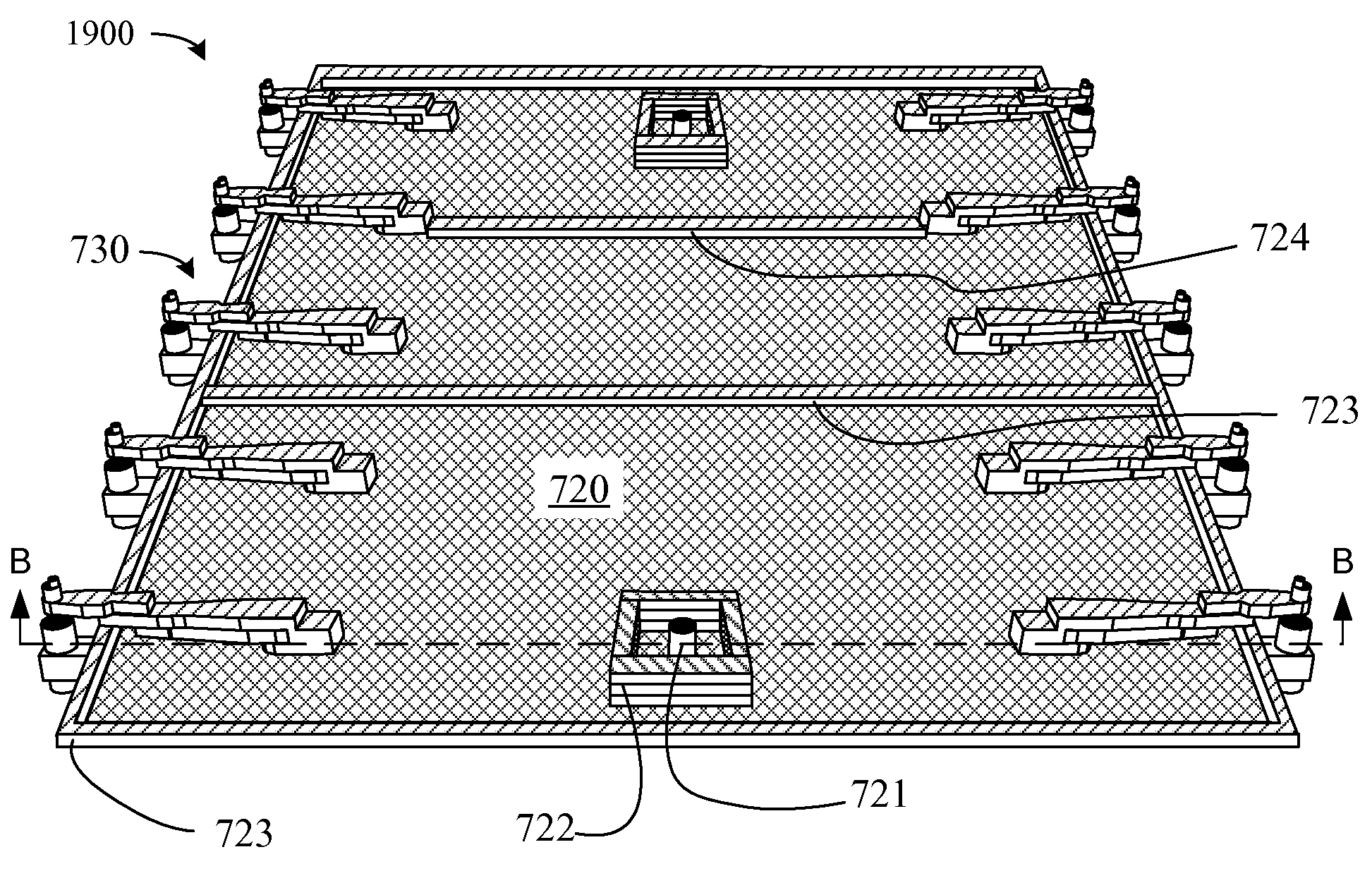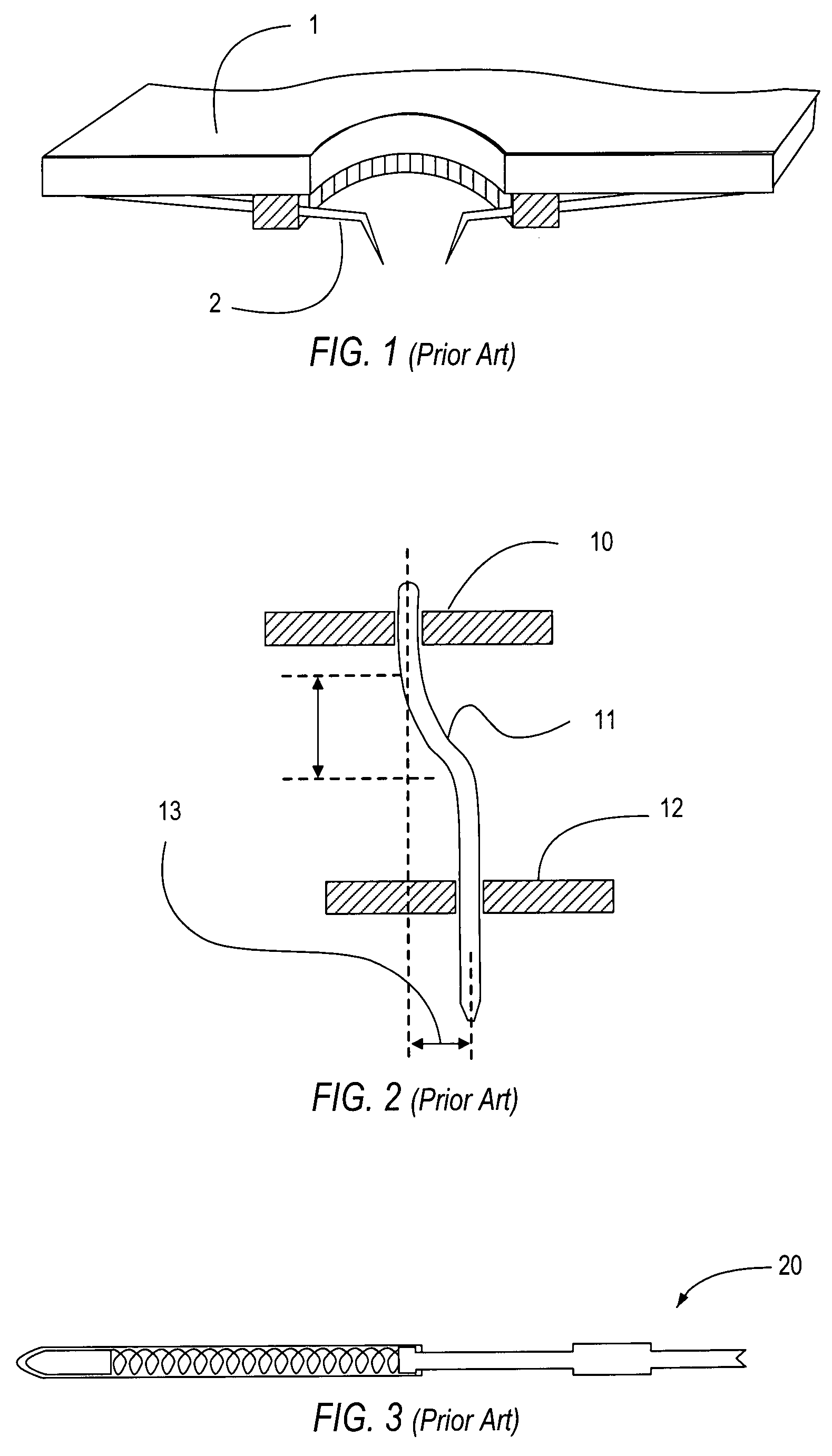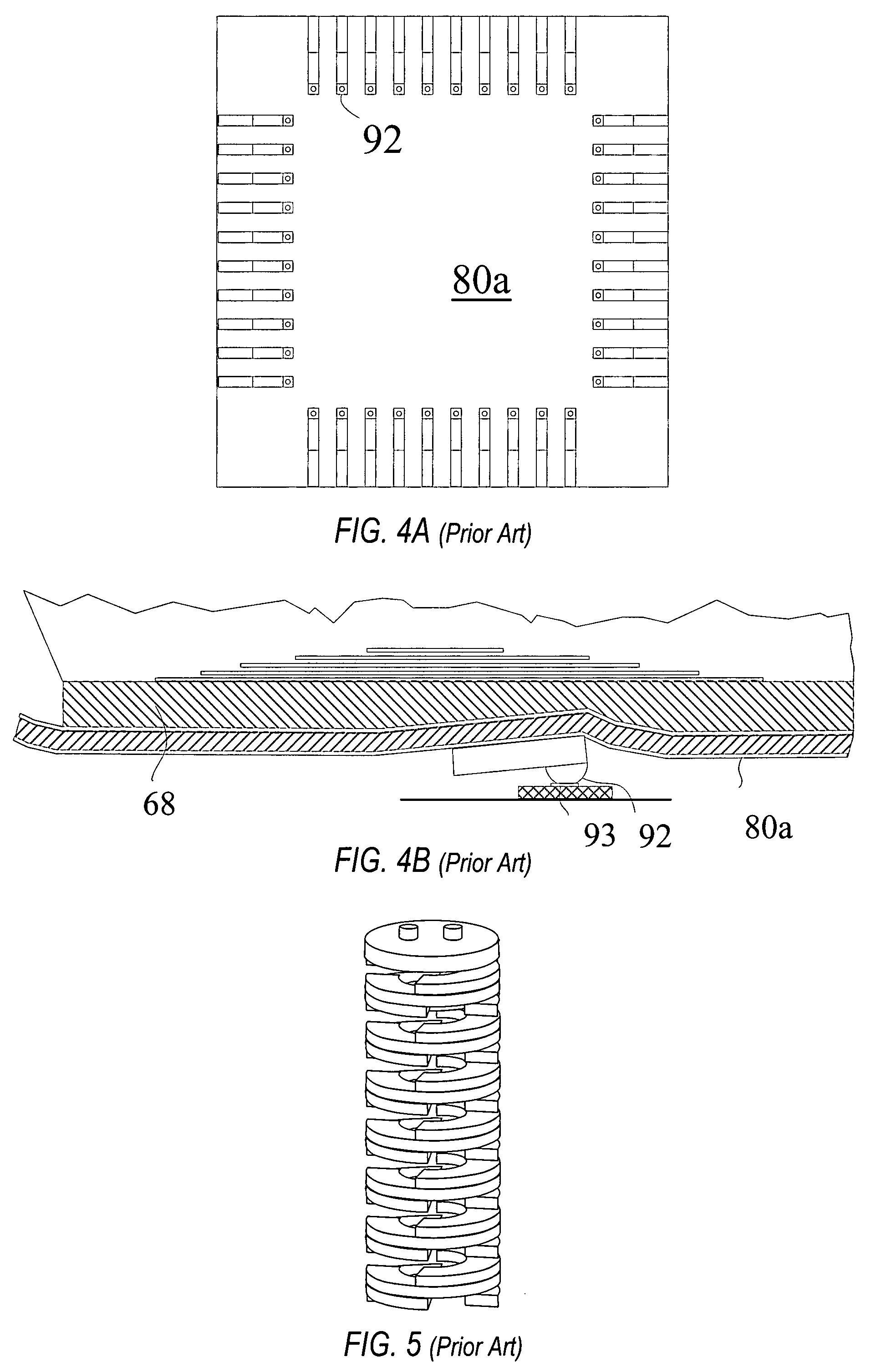Probe card repair using coupons with spring contacts and separate atachment points
a technology of probe card and spring contact, which is applied in the direction of resistive material coating, printed circuit assembling, metallic material coating process, etc., can solve the problems of significant increase in the bandwidth of an integrated circuit, limitations become even more severe, and most probe card technologies cannot replicate the high frequency environment of high bandwidth ics, etc., to achieve better impedance control, short springs, and improved power/ground distribution
- Summary
- Abstract
- Description
- Claims
- Application Information
AI Technical Summary
Benefits of technology
Problems solved by technology
Method used
Image
Examples
Embodiment Construction
[0070]One objective in integrated circuit testing, particularly in memory testing, is to enable two touchdown or single touchdown full wafer testing applications, while eliminating the need to use an expensive and hard to manufacture 5-11 mm thick co-fired ceramic HDI that is large enough to cover the area of today's 300 mm or larger wafers. The traditional HDI / interposer approaches use a thick HDI to provide mechanical stability to eliminate bowing or flexing. The thick ceramic provides a relatively stiff support and planar surface to keep the springs contacting the DUT wafer to operate within its stress limits while maintain sufficient pressure to effect a reliable electrical contact to the DUT wafer. In contrast, the compliance partitioning architecture allows the HDI to flex and uses two sets of opposing springs to dynamically adjust to keep contact to the IC during testing.
[0071]One embodiment of the invention electrically and mechanically attaches low compliance (short) probes...
PUM
| Property | Measurement | Unit |
|---|---|---|
| frequency | aaaaa | aaaaa |
| frequencies | aaaaa | aaaaa |
| lengths | aaaaa | aaaaa |
Abstract
Description
Claims
Application Information
 Login to View More
Login to View More - R&D
- Intellectual Property
- Life Sciences
- Materials
- Tech Scout
- Unparalleled Data Quality
- Higher Quality Content
- 60% Fewer Hallucinations
Browse by: Latest US Patents, China's latest patents, Technical Efficacy Thesaurus, Application Domain, Technology Topic, Popular Technical Reports.
© 2025 PatSnap. All rights reserved.Legal|Privacy policy|Modern Slavery Act Transparency Statement|Sitemap|About US| Contact US: help@patsnap.com



